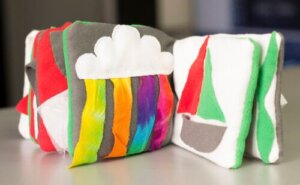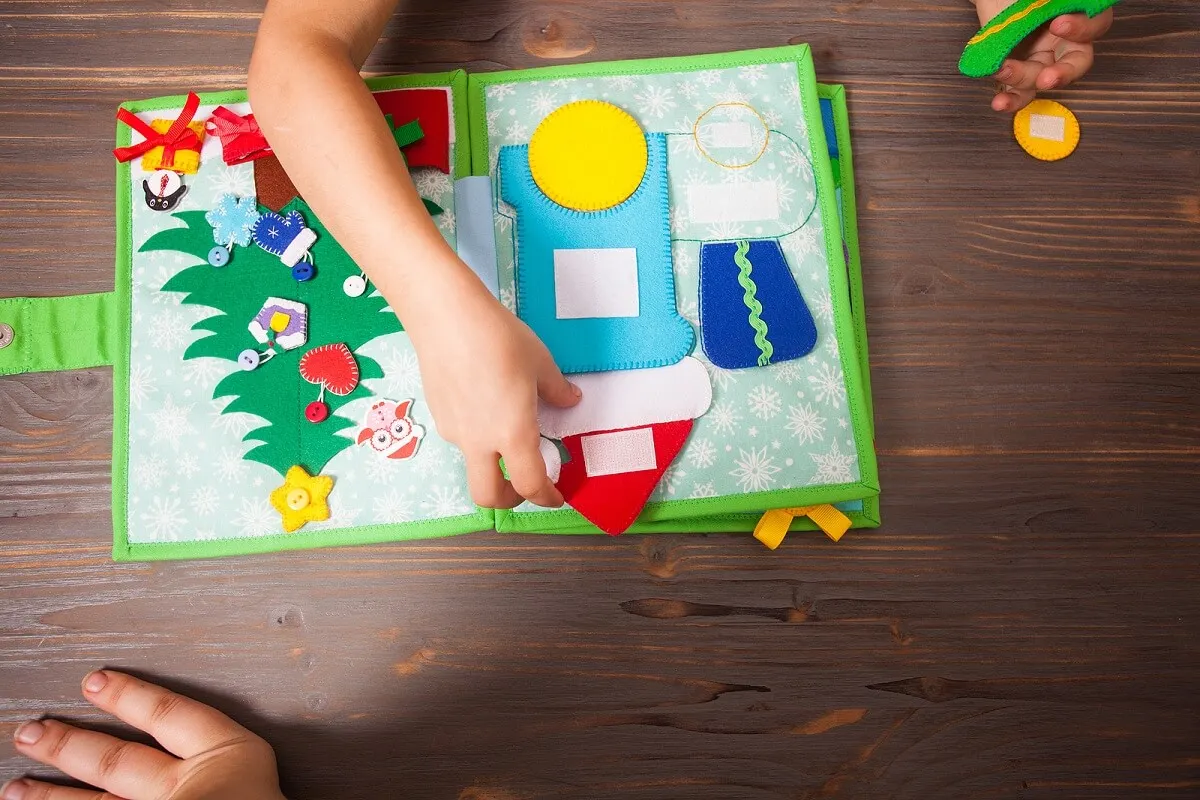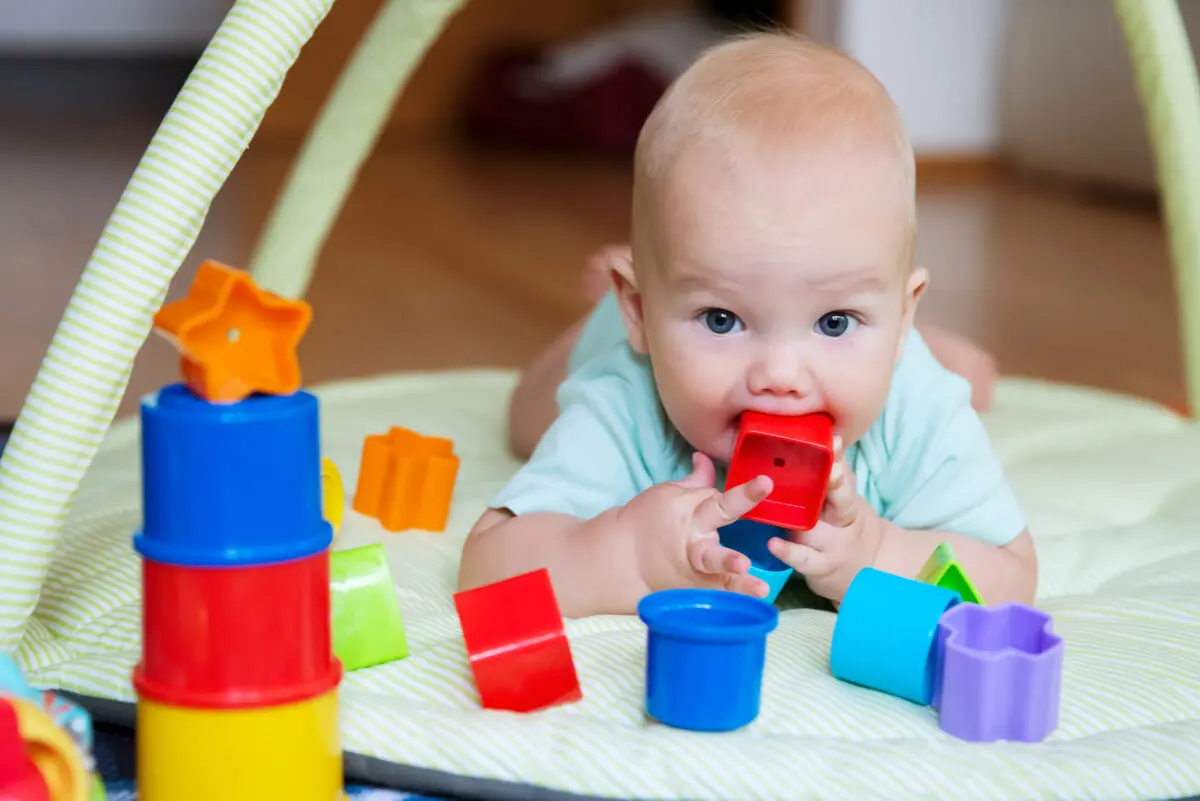Step-by-Step Guide to Making a Sensory Book at Home


Reviewed and approved by the psychologist Elena Sanz
Some toys are essential for a child’s development. After we’ve told you how a sensory book can help your child, you’ll immediately want to find out how to make one at home…and we’ll tell you how!
Sensory books go by a lot of names, from teaching books, activity books and felt books, to terms like quiet books and soft books. They’re also linked to a number of benefits.
There’s scientific evidence that children who are deprived of sensory stimulation often have delayed development. Similarly, it has been shown that babies who receive early stimulation tend to have better growth and better-organized central nervous systems.
What are the characteristics of a sensory book?
A sensory book is a toy, but not just any old toy. It’s usually aimed at babies and children between 6 months and 3 years of age.
However, if its content is adapted, it could even be used by a child up to 10 years old. This is thanks to one of its most outstanding features: customization.
When it comes to a sensory book, the sky’s the limit. You can choose the size, the content, and the materials. Regarding material, there are some that are considered typical of this toy, such as fabric and felt.
Similarly, there’s a widespread perception that these books favor fine psychomotor skills, concentration, and even the love of books. In addition, they’re a perfect gift from mom to baby or child, which further strengthens this bond.

What materials do you need?
As we’ve mentioned, the materials you’ll use will depend on how you want to make the book. However, there are some that are common to find:
- Fabric
- Felt
- Interlinings
- EVA foam
- Binding materials: Velcro, rings, glue
- Sewing tools: sewing machine, needle, scissors
- Sewing utensils: threads, ribbons, rags, buttons, zippers
Step-by-step instructions to make a sensory book
Taking into consideration the age of your child, the book can be more about sensations (for babies) or activities (for older children). However, whatever the case may be, you should think of creative ways to catch their attention.
And this is one of the hardest parts, because before you start cutting, sewing, or gluing, you need to have an outline of the content of each page. Once you have it, let’s get to work!
Step 1
Determine the size of the book. Once you have decided, mark it on the material you’re going to use for the pages, either felt or EVA foam and start cutting. Make sure they’re all the same size!
The book doesn’t need to have that many pages if it’s for babies. But, in the case of older children, as the idea is to have games on each of the pages, you should make it slightly larger.
Step 2
Remember we talked about the designs? Well, now is the time to bring them to life. Take each of the pages of the book and create the stimulus or activity you thought of.
To do this, you can make use of buttons, ribbons, fabric scraps, zippers, EVA foam, and so on. The options are endless!
Step 3
Finally, we come to the binding, which also offers different options. If you know your child, you can choose the one you think will be the easiest for them to hold. All bear in mind durability (interlinings can help here).
The most commonly used options include rings, with which you usually make three holes in the margins of the pages. With this, you’re done!

Discover more: 12 Ways to Stimulate Your Child’s Brain Health
A sensory book, thousands of possibilities
You may enjoy the whole process of creating this very important toy for your child’s development. However, we’re not going to lie to you, the hardest part is often finding ideas for the book.
One of the most popular is a textured book (smooth, rough, soft, hard…). Others, on the other hand, create pages with different activities: puzzles, matching pieces, relating shapes, colors, letters, and numbers. What are you waiting for to give your child a wonderful gift?
All cited sources were thoroughly reviewed by our team to ensure their quality, reliability, currency, and validity. The bibliography of this article was considered reliable and of academic or scientific accuracy.
- Ardiel, E. L., & Rankin, C. H. (2010). The importance of touch in development. Paediatrics & child health, 15(3), 153–156. https://doi.org/10.1093/pch/15.3.153
- Lee J. H. (1991). An experimental study of the effects of sensory stimulation on the early growth and development of Korean low-birth-weight infants. Journal of pediatric nursing, 6(2), 144–145.
This text is provided for informational purposes only and does not replace consultation with a professional. If in doubt, consult your specialist.








